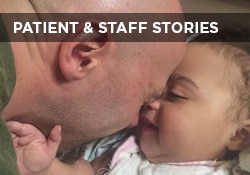This website uses cookies so that we can provide you with the best user experience possible. Cookie information is stored in your browser and performs functions such as recognising you when you return to our website and helping our team to understand which sections of the website you find most interesting and useful.
Patient Safety and Quality Care
Because of their high state of acuity, patients see and hear everything in relationship to themselves, looking and listening for signs and symbols that offer hope and security. Assuring patient safety and quality care is also a mandate of U.S. value-based purchasing measures, evaluated in part by HCAHPS scores.
There are many factors that contribute to the welfare of your patients and staff, not the least of which is hospital noise.
Falls
While patient falls may occur for various reasons, distractions contribute to the risks that lead to a patient losing his or her balance. Clutter in the corridors, awkward walks to the bathroom, inadequate or glaring lights, and sudden and erratic sounds all increase risks of preventable falls.
Confused patients that attempt to get out of bed when they are unable to safely do so are less likely to do so if they are calmer and less agitated.
In her “Notes on Nursing,” Florence Nightingale warned against subjecting patients to any sound that causes “anticipation, expectation, waiting, fear of surprise.”
Medication Errors
Improving hospital noise can also help reduce medication errors, as staff members are more apt to make mistakes when they are stressed out or distracted by noise — which impacts short-term memory and mental efficiency. Speech communication is also affected by noisy environments, increasing the possibility of misunderstanding that can result in errors.
Resources
Here are some resources you can use to help improve safety in your hospital:
- Hospital Noise & the Patient Experience whitepaper by Dr. Susan E. Mazer
- Increase Patient Safety by Creating a Quieter Hospital Environment article by Dr. Susan E. Mazer
- Addressing Hospital Noise video
For a Research Bibliography on noise, sleep, pain management, and other topics, contact us.
Also, check out these other searchable research databases.
If you’d like to have Dr. Susan E. Mazer speak at your next meeting or conference about improving the hospital auditory environment, contact us.










